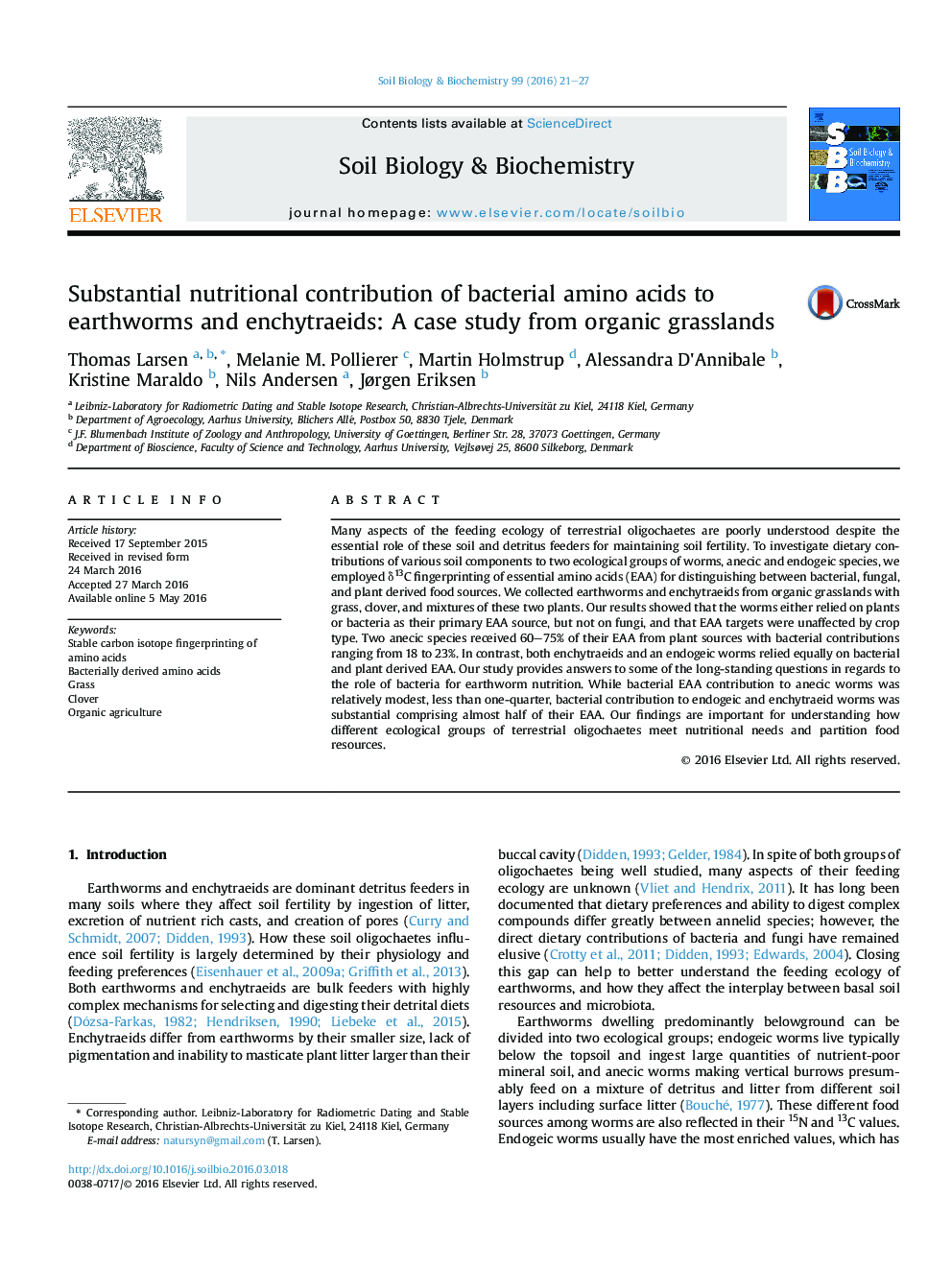| کد مقاله | کد نشریه | سال انتشار | مقاله انگلیسی | نسخه تمام متن |
|---|---|---|---|---|
| 2024293 | 1542585 | 2016 | 7 صفحه PDF | دانلود رایگان |
• Protein sources of worms were identified with amino acid 13C fingerprinting.
• Anecic earthworm species relied mostly on plant-derived amino acids.
• Endogeic earthworms relied equally on bacterial and plant-derived amino acids.
• Enchytraeid worms resemble endogeic earthworms in terms of EAA sources.
• EAA targets were neither tied to crop type nor the size of individual earthworms.
Many aspects of the feeding ecology of terrestrial oligochaetes are poorly understood despite the essential role of these soil and detritus feeders for maintaining soil fertility. To investigate dietary contributions of various soil components to two ecological groups of worms, anecic and endogeic species, we employed δ13C fingerprinting of essential amino acids (EAA) for distinguishing between bacterial, fungal, and plant derived food sources. We collected earthworms and enchytraeids from organic grasslands with grass, clover, and mixtures of these two plants. Our results showed that the worms either relied on plants or bacteria as their primary EAA source, but not on fungi, and that EAA targets were unaffected by crop type. Two anecic species received 60–75% of their EAA from plant sources with bacterial contributions ranging from 18 to 23%. In contrast, both enchytraeids and an endogeic worms relied equally on bacterial and plant derived EAA. Our study provides answers to some of the long-standing questions in regards to the role of bacteria for earthworm nutrition. While bacterial EAA contribution to anecic worms was relatively modest, less than one-quarter, bacterial contribution to endogeic and enchytraeid worms was substantial comprising almost half of their EAA. Our findings are important for understanding how different ecological groups of terrestrial oligochaetes meet nutritional needs and partition food resources.
Journal: Soil Biology and Biochemistry - Volume 99, August 2016, Pages 21–27
